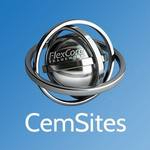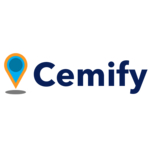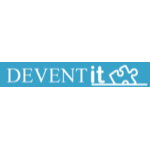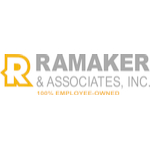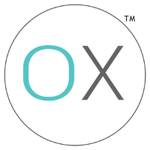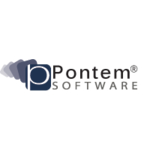List of Best Cemetery Software
Showing 10 of 10 productsCaselle Utility is a software that aims to streamline the day-to-day operations of utility companies. From managing customer accounts and billing to monitoring usage and generating reports, this software is designed to simplify and optimize processes...Read Caselle Utility Reviews
CemSites, the latest software solution for cemetery management. Designed to streamline and simplify the processes of maintaining cemetery records, burial planning, and finances, CemSites is a tool for any cemetery operator. With its user-friendly int...Read CemSites Reviews
Cemify is a software created for businesses to streamline their cemetery management processes. With its user-friendly interface features, Cemify provides a seamless experience for cemetery owners and staff. Say goodbye to tedious paperwork and hello...Read Cemify Reviews
CIBIS is a software solution for all your business needs. With its advanced features and user-friendly interface, CIBIS is designed to streamline your processes and boost efficiency. Say goodbye to complex systems and hello to increased productivity...Read CIBIS Reviews
CIMS Cemetery is a software designed specifically to manage all aspects of cemetery operations with ease and efficiency. Developed by experts in the industry, CIMS Cemetery streamlines the management process through its user-friendly interface and po...Read CIMS Cemetery Reviews
Nexus Cemetery, a digital resting place for the memories and legacies of our beloved ones. We understand the importance of honoring and cherishing those who have passed on, and through our innovative services, we provide a platform for their stories...Read Nexus Cemetery Reviews
OpusXenta is a software that aims to simplify and streamline the management of after life services. With its user-friendly interface and innovative features, OpusXenta is a game changer in the funeral and cemetery industry. Providing a seamless exper...Read OpusXenta Reviews
Plotbox Cemeteryis a ultimate digital solution for managing cemetery operations. Say goodbye to traditional paper-based methods and embrace a streamlined is a software designed specifically for the unique needs of cemeteries. With Plotbox Cemetery, s...Read Plotbox Cemetery Reviews
Pontem Cemetery, the final resting place for generations of families in our community. With a rich history dating back to the early 1800s, Pontem Cemetery is more than just a burial ground - it is a sacred space where loved ones are remembered and ho...Read Pontem Cemetery Reviews
Crypt Keeper is a software designed to secure your digital assets and protect them from potential threats. This innovative tool offers state-of-the-art protection with its advanced features and user-friendly interface. Stay ahead of the game with The...Read The Crypt Keeper Reviews
- What Is Cemetery Software?
- Top Reasons Why Businesses Need Cemetery Software?
- What Are the Top Key Features of Cemetery Software?
- What Are the Top Benefits of Cemetery Software?
- What Are the Steps to Choose the Right Cemetery Software?
- What Are the Types of Cemetery Software for Different Industries?
- What Are the Technology Trends for Best Cemetery Software?
- What Are the Deployment Options for Cemetery Software?
What Is Cemetery Software?
Cemetery software refers to a specialized application that has been developed with the purpose of facilitating the management of various activities and processes within a cemetery setting. The system encompasses several functionalities such as the maintenance of records, financial administration, scheduling, invoicing, generating reports, and overseeing other administrative duties.
The aforementioned software is a specialist tool designed to enhance the efficiency of cemetery operations. This program enables cemetery administrators to effectively manage their clientele, including tracking customer information, burial records, additional services rendered, and payments collected.
Furthermore, this technology has the potential to facilitate the monitoring of space availability, the organization of burial schedules, the allocation of new plots, the dissemination of pertinent information to clients, and the generation of diverse reports. The utilization of cemetery management system significantly enhances the ease and efficiency of accounting and billing processes.
The system maintains a record of monetary inflows, outflows, and membership acquisitions. Additionally, it has the capability to produce invoices and statements. Additionally, the software has the capability to generate income reports, which can assist operators in maintaining accurate records.
In general, the utilization of cemetery software has the potential to yield time and cost savings for operators in the management of their cemetery operations. The implementation of this customized program has the potential to effectively reduce operational expenses while facilitating the organization, maintenance, and timely updating of cemeteries by operators.
Top Reasons Why Businesses Need Cemetery Software?
1. Precisely monitor and record the expenditures related to the operational aspects of cemeteries, encompassing labor, supplies, and administrative overheads.
2. One potential solution is to implement an automated synchronization process between the customer records and the cemetery database. This would facilitate quicker retrieval of information and enable more efficient data analysis.
3. Optimize procedures pertaining to the handling of various types of documentation, including permits and sales contracts.
4. Generate complete records pertaining to the utilization of cemetery lands and facilities.
5. One potential application is the real-time mapping of cemetery locations and the identification of available spots.
6. One potential solution is to implement automated systems for customer notifications, reminders, and payments.
7. Utilize data-driven methodologies to derive insights pertaining to customer purchasing patterns and behaviors.
8. Enhance the precision of burial records and death certificates.
9. One way to enhance efficiency in inventory and record management is through the utilization of barcodes and RFID tags.
10. Cemetery management system facilitate the seamless integration of cemetery data with both state and federal requirements through automated processes.
11. Employ automated dashboards to oversee and manage cemetery activities.
12. Enhance customer service by implementing complete customer portals that offer quick access to various services and support options.
13. One effective approach to ensuring the safekeeping of cemetery records is the utilization of data encryption techniques and the implementation of backup systems.
14. One potential solution is to implement automation processes for routine maintenance activities, with the added functionality of notifying facility employees when intervention is required.
15. Facilitate efficient and convenient personnel access to customer and cemetery information.
What Are the Top Key Features of Cemetery Software?
1. Automated Accounting: Cemetery software facilitates the monitoring and administration of financial records, encompassing the management of monies acquired from cemetery plots and related services. Additionally, it offers functionalities for monitoring financial transactions and overseeing consumer accounts.
2. Data Management: Cemetery management software facilitates the consolidation of pertinent data pertaining to cemetery sites, services, and interment events within a unified platform, hence streamlining accessibility. The aforementioned comprises contact details, documents pertaining to funerals, maps delineating burial plots, and information regarding grave markers.
3. Online Portals: Cemetery software facilitates client access to documents pertaining to the cemetery areas they possess, while also enabling online transactions for the acquisition of goods and services.
4. Scheduling Tools: Cemetery management system provides a comprehensive solution for the management and tracking of interment services. It features an advanced dashboard that keeps users informed about planned events and maintains a record of past burial and cremation activities.
5. Document Storage and Retrieval: The best cemetery software facilitates the storage, organization, and retrieval of various documents pertaining to cemetery operations, including cemetery deed records, cemetery ledgers, grave deed records, and funeral records.
6. Reporting: Cemetery software offers efficient reporting capabilities for the purpose of monitoring cemetery inventory, lot sales, services rendered, and other related activities. This can facilitate management in obtaining a comprehensive understanding of the cemetery's operations and enable them to make decisions based on more informed perspectives.
7. Image and Mapping Capabilities: The cemetery management system has the functionality to generate maps and visual depictions of cemetery plots, along with a comprehensive collection of photographs, including grave markers, associated with each individual plot.
8. Mobile Functionality: Cemetery management software possesses the capability to operate on several devices, provided they are connected to the internet, so enabling users to conveniently access its features and information while on the move.
9. Security: Cemetery software incorporates many functionalities, such as role-based security measures, to guarantee that solely authorized individuals possess the necessary privileges to access confidential documents.
10. Integration: Cemetery software has the capability to be seamlessly connected with several other software programs utilized within the cemetery, including invoicing and registration systems.
What Are the Top Benefits of Cemetery Software?
1. Improved record-keeping - The utilization of the best cemetery software facilitates the automation and enhancement of several manual record-keeping procedures within the cemetery industry. These procedures include the registration of burials and memorials, the collection of service fees, and the maintenance of accurate and up-to-date records pertaining to interred remains and memorial objects. The use of this cemetery management system enhances the efficiency of data entry, reporting, and research functionalities, hence facilitating the monitoring and upkeep of cemetery records.
2. Improved customer service - The utilization of cemetery management software expedites and streamlines the responsiveness of staff members in addressing consumer requirements. This intervention contributes to the mitigation of waiting times and enhancement of customer satisfaction.
3. Increased safety and security - The utilization of digital cemetery software contributes to the maintenance of the well-being and security of all individuals who visit the cemetery premises. The process of monitoring the placement of burials enables personnel to mitigate potential risks and hazards that may exist within specific sections of the cemetery.
4. Increased operational efficiency - Cemetery management system facilitates the efficient monitoring and administration of cemetery activities, enabling personnel to optimize their utilization of time and resources. This aids in the optimization of cemetery operations and ensures a satisfactory experience for all visitors.
5. Cost savings - Cemetery software has the potential to decrease expenses related to human labor and paper-based record-keeping by implementing automation and optimizing several manual operations. This can lead to substantial cost reductions in the long run.
6. Reporting capabilities - The utilization of digital cemetery software offers a range of reports that facilitate the evaluation of crucial operational aspects, including burial patterns, financially precarious records, and sales of memorials. This information possesses significant value in the context of strategic planning and decision-making processes.
What Are the Steps to Choose the Right Cemetery Software?
1. Determine budget: Determine the financial allocation that you or your company are prepared to designate for digital cemetery software.
2. Research and compile options: Utilize the research tools available on the internet to construct a comprehensive list of software solutions that align with your financial constraints.
3. Assess features: Conduct an assessment of each cemetery management software alternative in order to ascertain the features and functionalities that most effectively cater to the requirements of your firm.
4. Consider user experience: Conduct an evaluation of user interface design and user experience reviews in order to analyze the holistic user experience.
5. Contact the software companies: It is advisable to initiate contact with each prospective software firm in order to inquire about pertinent matters and engage in discussions regarding features that are tailored to the unique needs of your organization and industry.
6. Request a demo: To evaluate the software's capabilities directly, it is recommended to solicit a product demonstration for each available software option.
7. Select the right software: Based on the comprehensive study and thorough assessment completed, it is imperative to arrive at a final determination regarding the most suitable digital cemetery software for your firm.
What Are the Types of Cemetery Software for Different Industries?
In general, There exist three primary categories of cemetery software that cater to diverse sectors. The aforementioned offerings encompass software applications for the management of cemeteries, funeral homes, and e-commerce platforms tailored specifically for providers in the death care industry.
Cemetery management software is specifically developed to assist cemeteries in effectively managing the multitude of intricacies associated with overseeing a cemetery. These complexities encompass a wide range of tasks, including maintaining customer information, managing plot allocation, overseeing grave markers, and coordinating burials.
These solutions offer a streamlined and systematic approach for cemeteries to effectively manage their clientele and the corresponding burial sites. Funeral home software is specifically developed to facilitate the comprehensive organization of funeral and commemorative proceedings by funeral homes.
Its functionalities encompass a wide range of tasks, including the creation of obituaries, the management of services, and the processing of payments. These solutions offer funeral homes a dependable system for enhancing the efficiency and effectiveness of their company operations.
E-commerce solutions cater to the needs of death care providers by facilitating their online presence, encompassing tasks such as website development, implementation of client payment systems, execution of digital advertising initiatives, and management of end-of-life care package transactions. The purpose of these solutions is to offer death care providers a competitive advantage in a saturated industry.
What Are the Technology Trends for Best Cemetery Software?
There is a prevailing inclination within the best cemetery software industry towards the use of increasingly efficient and automated solutions for the maintenance of memorials. This encompasses software that demonstrates intelligent integration with pre-existing software and hardware systems, including cloud-based systems that offer enhanced manageability and upgradability.
The inclusion of potent mapping tools, comprehensive customer relationship management (CRM) functionalities, sophisticated analytics, and reporting tools is vital in cemetery management software. Additionally, the platform should possess user-friendly dashboards that are easily navigable, incorporating role-specific and adaptable security configurations.
In addition, it is imperative for digital cemetery software to possess mobile and web-based capabilities, thereby enabling staff members to conveniently access records, generate reports, and carry out transactions while on the move.
Ultimately, it is imperative for the software to provide robust data protection measures, alongside incorporating functionalities such as online payment capabilities, push alerts, and analytics tools that facilitate cemetery operators in gaining a comprehensive understanding of their clientele's requirements and preferences.
What Are the Deployment Options for Cemetery Software?
The available deployment choices for the best cemetery software are contingent upon the specific sort of system being employed. In the realm of cemetery management software, two primary deployment strategies prevail Hosted and On-Premises.
The Hosted Deployment Model entails the outsourcing of software hosting to an external supplier, who maintains and operates the software on their dedicated servers. This alleviates the responsibility of software installation and maintenance from the customer.
Subsequently, the customer remunerates the provider with regular payments to account for the expenses associated with hosting and software updates.
The On-Premises Deployment Model necessitates the customer to independently undertake the installation, maintenance, and updating of the software on their own hardware infrastructure. The aforementioned strategy is commonly associated with higher prices compared to a hosted model, as it necessitates the client to assume financial responsibility for hardware, hosting, and software upgrades.
However, it offers the customer a greater degree of control over their program. The responsibility for procuring the requisite server hardware, database, and software upgrades is upon the client. Nevertheless, some providers extend additional services to facilitate the installation and upkeep of the program on the customer's behalf.

